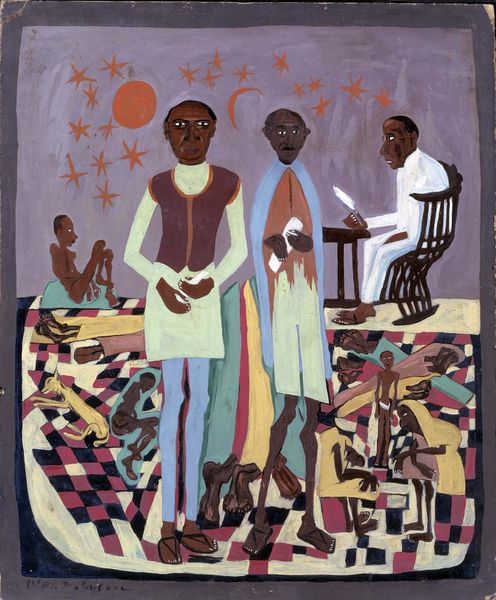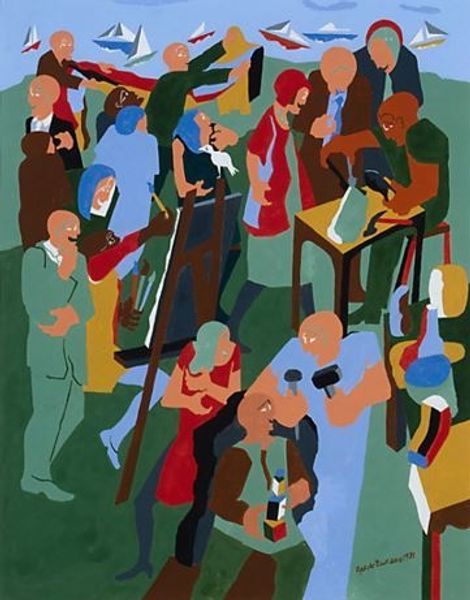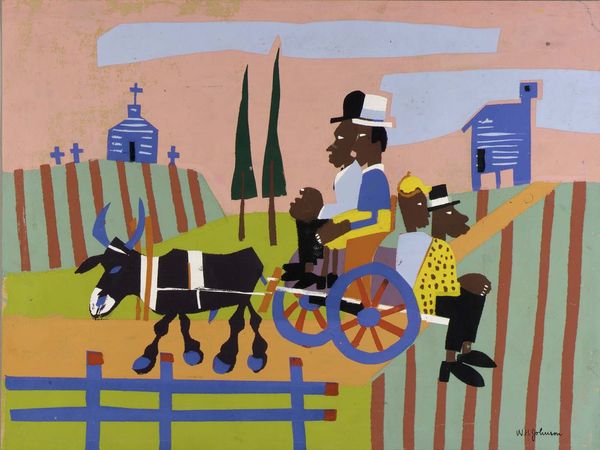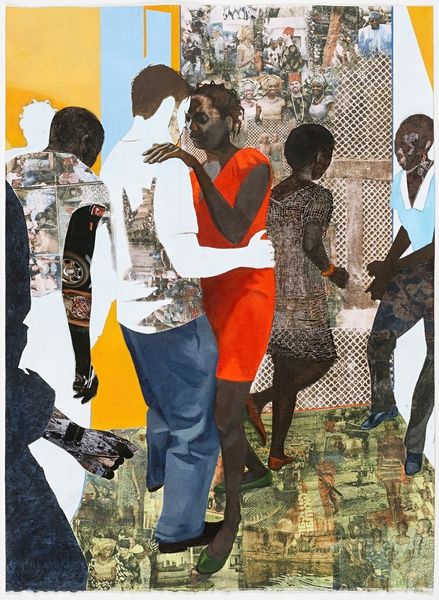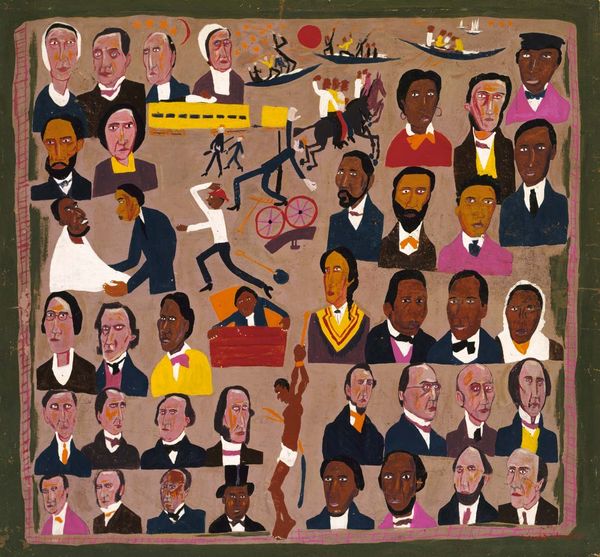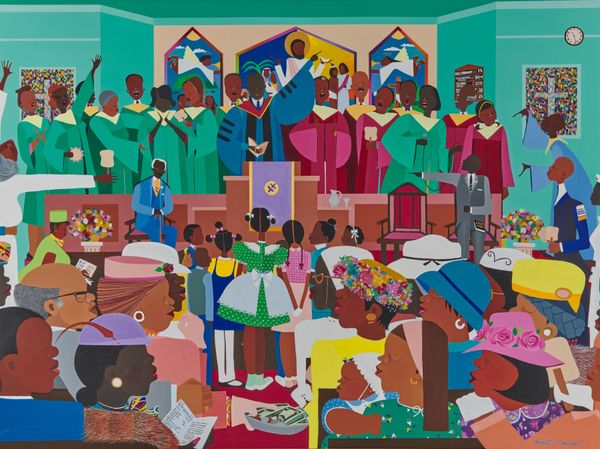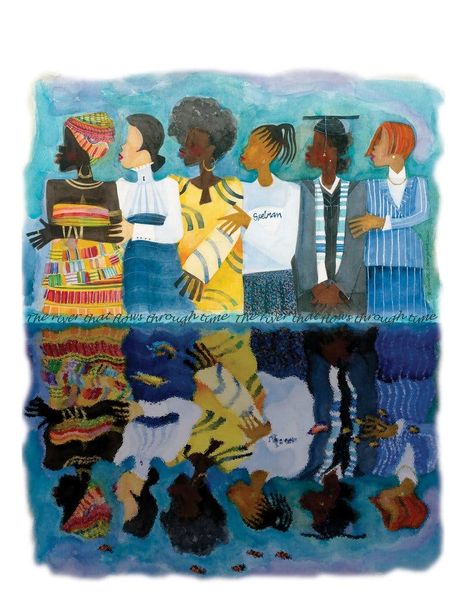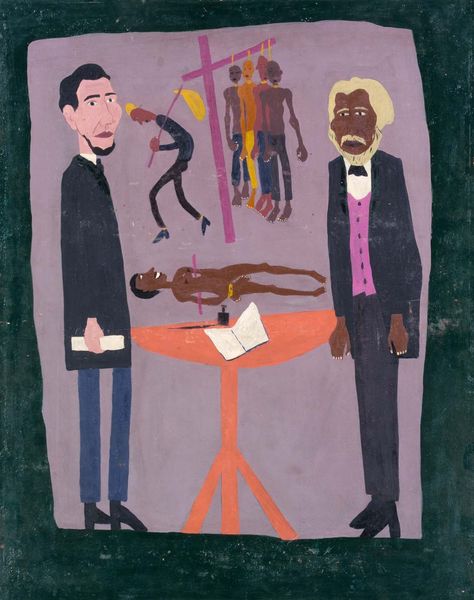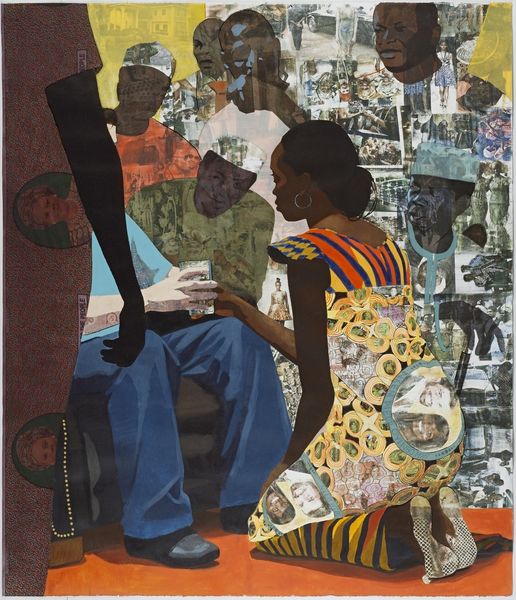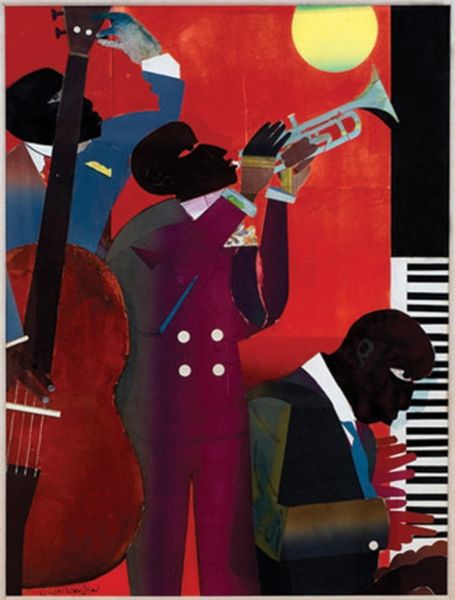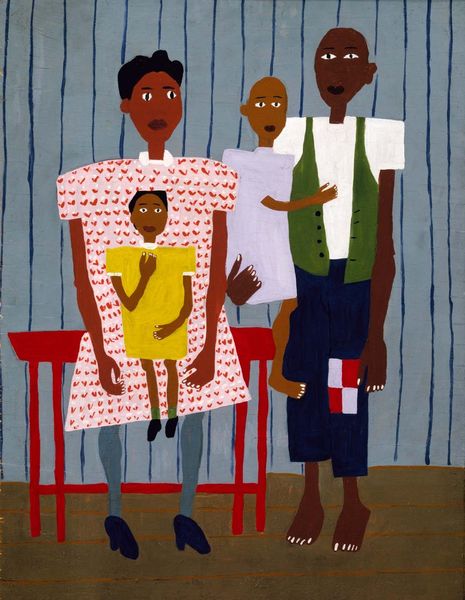
painting, acrylic-paint
#
portrait
#
narrative-art
#
painting
#
pop art
#
harlem-renaissance
#
acrylic-paint
#
figuration
#
modernism
#
regionalism
Copyright: William H. Johnson,Fair Use
Curator: This vibrant, visually arresting piece is William H. Johnson’s "Dr. George Washington Carver," created around 1945. It's an acrylic painting full of dynamic, symbolic elements. What are your immediate impressions? Editor: The overriding sensation is… brightness. An almost aggressively sunny disposition. And yet, the composition feels crowded, the figures a bit flattened and awkwardly arranged within the intense yellow backdrop. Curator: Yes, the color certainly grabs you. Yellow, of course, traditionally symbolizes intellect, honor, and loyalty—apt tributes to Carver. But look closer: the seeming awkwardness also has meaning. Johnson simplifies forms to their essence, which directs our attention to the underlying messages of potential and advancement. Editor: It’s fascinating how Johnson represents Carver in so many scenes and vignettes – from childhood onward, and across social classes, suggesting a comprehensive impact on the community, but without much social support himself.. The lack of realistic perspective pushes the narrative to the fore, doesn't it? Curator: Exactly. And the images— cotton plants, vegetables, tools of science— they all create this multi-layered narrative about Carver’s work in agriculture and his dedication to education. The tools and botanicals symbolize science and ingenuity, crucial during a difficult period of agricultural history and widespread poverty. Even the palette— the one in the lower corner of the work -- serves as a kind of “key.” It is symbolic of diversity and possibility Editor: There's a tension here, though, isn't there? The "pop art" style—the seeming simplicity—competing with these profound, layered meanings. One almost overlooks that Carver’s career coincided with legalized segregation. Curator: True, but Johnson also used simplicity as a visual protest. It emphasized accessibility, countering elitist ideas about art, thus mirroring Carver’s dedication to accessible education for underserved people. Editor: That adds another compelling layer. Johnson seems to be consciously building a visual monument here, not just to an individual but to a whole set of values during a critical era. Curator: Absolutely. Johnson's unique style amplifies Carver's historical impact. It’s not just a portrait, but an act of remembrance. Editor: A visual testament that’s deceptively profound. Curator: I couldn't agree more, an enduring celebration using a powerfully direct visual language.
Comments
No comments
Be the first to comment and join the conversation on the ultimate creative platform.
